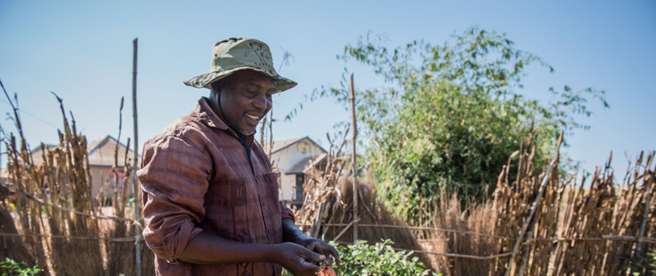Over half the world’s GDP is highly or moderately dependent on natural resources and services, and while most of the world’s top 500 companies have a climate target – only 5% have a target for biodiversity. Biodiversity finance is slowly emerging as a pathway to unlock new finance for measurable positive outcomes for nature and its stewards. Biodiversity credits aim to offer verifiable, quantifiable and tradeable units of biodiversity restores or conserved – and while the voluntary market is developing, it could expand rapidly with the potential to reach $2 billion by 2030 according to the World Economic Forum.
The 1t.org US Community Collaborative came together for a Community Dialogue on “Understanding Natural Capital and Biodiversity Markets,” co-hosted by the World Economic Forum’s Nature Action Agenda team with Shivin Roy and Allesandro Valenti. Here’s a recap and key resources to help continue the conversation.
Key Statistics
•The World Wildlife Fund estimates there has been a 69% decline in monitored wildlife populations over the past 50 years.
•The World Economic Forum estimates that half of global GDP ($44 trillion) is moderately or highly dependent on nature.
•According to the Convention on Biological Diversity and the Nature Conservancy, the Paulson Institute and the Cornell Atkinson Center for Sustainability, there is a $711 billion gap in funding for nature.
How we close that gap has been top of mind for many leading thinkers in conservation finance for years, but the conversation has rapidly accelerated following the Kunming-Montreal Global Biodiversity Framework reached at the Convention on Biological Diversity’s 15th Conference of the Parties (COP 15) in late 2022. This historic agreement was signed by 193 countries. Among the twenty-three targets to be achieved by 2030, are the following:
•30% conservation of land, sea and inland waters,
•30% restoration of degraded ecosystems,
•halving the introduction of invasive species,
•and a $500 billion per year reduction in harmful subsidies.
So how do we get there, and what does the 1t.org US community need to know to support these goals?
Key Questions and Issues
1. Cost versus value: putting a price or creating markets for nature restoration and conservation can help drive much needed investment, but at what cost? How can we accurately put a monetary value on something that is essentially our existence on the planet?
2. If markets are one of the primary way to achieve our goals, how do we structure a market to accurately account for the complexity of flora, fauna and fungi that make up the web of life. Is an elephant more valuable than a lichen?
3. Can existing frameworks help pave the way? Carbon markets, for all of their faults, have had some successes in driving investment to forests and nature. But the fungibility of carbon makes it relatively easy to measure and compare them across geographies. A ton of CO2 emitted or avoided in India is the same as a ton emitted or avoided in Indiana.
Our Community Dialogue previewed some emerging work on natural capital accounting and delved into the Biodiversity Credits Initiative, “a multi-stakeholder initiative shaping a high-integrity voluntary biodiversity credits market to drive investment toward a nature-positive and socially equitable future.” The World Economic Forum’s work is focused on the key questions above and provides a fantastic overview of where these markets currently stand.
What are biodiversity credits?
According the Biodiversity Credit Alliance, “biodiversity credits are an economic instrument that can be used to finance actions that result in the conservation of ecosystems and/or measurable, net-positive outcomes for biodiversity (e.g. via increase in integrity of species, ecosystems, natural habitats) through the creation and sale of units, largely for gain in biodiversity.”
The WEF Credits Initiative organizes its work along three tracks:
•Track 1: Supporting High Integrity in the Market through sound governance, equity and inclusion, and rigorous verification.
•Track 2: Metrics and Measurement to help document existing methodologies and assist in the development of additional frameworks to measure outcomes on the ground.
•Track 3: Strengthening the Business Case via a “Frontrunners Coalition” to showcase private sector interest, and help develop trust and confidence, in these emerging markets.
Incentives driving interests in biodiversity markets range from dependencies on ecosystems for products and in supply chains, regulatory compliance, market differentiation and reputation, as well as access to capital.
These credits may be used to enhance carbon credits, ensure access to ecosystem services, or potentially to contribute to nature beyond their own impact.
Deployment of biodiversity credits to date are being piloted around the world, including Australia, due to the development of governmental incentives and via the Walleca Trust in Mexico, South Africa, as well as a high-profile pilot program in Columbia by Terrasos.
The role of biodiversity markets will be central to the Convention on Biological Diversity’s COP 16 this November in Cali, Columbia. Here at 1t.org US, we aim to help inform our members on the key issues at hand as well as provide examples of partnerships and projects that highlight opportunities to close some of the finance gaps and allow the United States to play our part in meeting the ambitious targets set in 2022.
Resources
To help build our community’s base of knowledge we’ve pulled together the beginnings of a community bibliography, which can serve as a resource for interested public, private, and NGO parties looking to at biodiversity finance options. What are some of your favorite tools or resources? What are the key issues you’re seeing on the ground? And where do you see the most promise or potential pitfalls to avoid?
Global Biodiversity Framework (COP 15 and COP 16)
•WRI Biodiversity Credits Explained
Regulatory and Voluntary Frameworks
•International Association for Biodiversity Credits
•Biodiversity Crediting Allianc
•TNFD Recommendations for Nature Related Financial Disclosures
•High Level Governance and Integrity Principles for Emerging Voluntary Biodiversity Credit Markets
•Guidance for Corporates on Science Based Targets for Nature UK nature market principles
•New South Wales (Australia) Biodiversity Crediting
•Comparison of Nature Related Disclosure Frameworks
Markets/Methodologies
•Wallacea Trust Biodiversity Credit Methodology
Market Drivers/Research
•World Economic Forum Biodiversity Credits- Demand Drivers and Guidance
•BioFin (UN Agency) Investing in the Wealth of Nature Paper
•Investing in the Wealth of Nature Through Biodiversity and Ecosystem Service Finance Solutions
Opinions/Analysis
•Are We Barking Up the Wrong Tree?
•Ecosystem Map of Actors (Simas)



